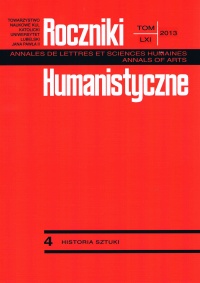Symboliczne wcielenia Oskara Kokoschki - Tristan
Abstrakt
From the very beginning of his artistic career Oskar Kokoschka systematically used historical, literary and mythological persons, whose figures, being recognizable in culture, facilitated the expression of his own psychological states and life experiences. The young painter, familiar with the classic works of literature, was also fascinated by music. One of his most vivid musical memories mentioned in an interview after more than half a century, was connected with his visits at the Vienna opera horse where he hare heard concerts directed by Gustav Mahler. A an especially enduring memory was that of the performance of R. Wagner’s drama Tristan und Isolde. From that time on the story of the mythical couple of lovers dominated the artist’s imagination, and after his meeting with Gustav's widow, Alma Mahler, he was able to assume a personified figure involving all the three people. As a result Kokoschka and Alma's love affair was supposed to develop according to the historical and mythical scenario of the medieval, and originally Celtic, saga. The artist first played the role of a life-guardsman seeking the favor of the patron of the Vienna cultural elite, and also seeking the hand of the inaccessible „queen” left by the dead director, „the old king”. Having won her acceptance the painter was able to be in her good graces for some time as her lover. However, a tragic turnabout, and at the same time the end of the relation, was inevitably inscribed in the process, in which the „young pretender” Kokoschka, having entered the role of the king, next had to give way to the next candidate. Stages of this symbolic process can be seen in Kokoschka’s letters as well as in his literary and visual works from the period of his relationship with Alma Mahler in the years 1912-1915, when one compares the facts from the protagonists’ lives with, among others, the medieval versions of the Tristan legend and its version composed by Wagner.
Copyright (c) 2013 Roczniki Humanistyczne

Utwór dostępny jest na licencji Creative Commons Uznanie autorstwa – Użycie niekomercyjne – Bez utworów zależnych 4.0 Międzynarodowe.





